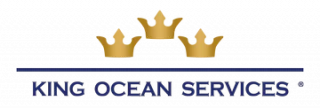In a perfect world, accounts payable employees would spend their time processing timely payments and completing vital tasks like spend analysis and cost management while business owners concentrated on increasing billable time and keeping their bank account balance healthy.
The reality is that AP employees spend the majority of their time manually entering invoice information from a variety of apps into their current software application or ledger or tracking down missing invoices, all while pestering managers for invoice approval.
While a manual system may be sufficient for a new company or small business that processes a few vendor invoices, other businesses find themselves struggling to keep track of invoices without a proper system in place.
Add to that the increased number of errors incurred by using manual systems, coupled with time-consuming 3-way matching, and tracking down lost invoices, and you have a recipe for disaster.
If you’ve outgrown managing your AP with the use of Microsoft Excel, or find yourself running short of the time and resources necessary to process AP timely, it may be time to improve system functionality by implementing an invoice tracking system.
What Is an Invoice Tracking System?
An invoice tracking system is typically part of invoice management software.
Invoice management software is designed to track an invoice from receipt through payment.
Using this system can eliminate many of the issues found in the accounts payable department including missing invoices, delayed approvals, and late payments.
Though it’s possible to implement a manual invoice tracking system, the best way to ensure that invoices are properly managed is to use an automated system.
Using an automated invoice management system allows you to track the status of an invoice at all times.
For example, using this type of system, you would be able to view when the invoice was received, automatically match the invoice with the correct purchase order, forward the invoice to the approvers, and pay the invoice before or on its due date.
What Are the Benefits of Using Invoice Tracking Software?
There are numerous benefits of using an invoice tracking system in your business, starting with increased department performance.
According to Ardent Partners Accounts Payable Metrics That Matter in 2024, research indicates that the primary obstacle to reducing AP processing costs and improving department performance is continuing to receive invoices and process payments manually.
Even if an invoice is emailed to a business, if there is no OCR technology in place to extract data from an invoice, it will still have to be downloaded, printed, and entered into an accounting software application manually.
Other benefits of using an invoice tracking system include:
![]()
Faster Invoice Processing
Manual invoice processing often results in lost or misplaced invoices that often result in late payments.
Using an invoice tracking system, you’ll know exactly when an invoice is received, when it was sent for approval, and when it’s due to be paid.
Cutting down on invoice processing time saves money and frees up AP staff to work on more important tasks.
A good invoice tracker can also manage recurring invoices from a vendor and easily handle online invoicing from vendors as well.
Better Organization
Imagine how much easier it is to locate an invoice when it’s filed electronically.
Instead of an invoice getting buried on someone’s desk under piles of paper, or being routed to the wrong department, where it may sit for days or even weeks, you’ll have easy access to all incoming invoices.
This enables you to easily forward an invoice for approval or set it up for payment without the need to manually input it into your accounting software application.
Quicker Invoice Approvals
According to Ardent’s 2024 AP report, 50% of survey respondents stated that delayed invoice/payment approvals are the number one issue facing AP departments today.
While invoices can get routed to the wrong department once received, it’s usually during the invoice approval process that issues arise.
Invoices are routed to the wrong approver, the approver is out of the office or on vacation, or the invoice sits in an in-basket, where it’s covered by other papers.
Using invoice tracking and automation forwards invoices to the designated approver electronically and will automatically forward the invoice to a backup approver should the primary approver be unavailable.
Real-Time Reporting and Analytics
If a paper invoice is sitting on someone’s desk waiting to be approved, it’s not showing up in your reports.
Having an automated AP system in place means that reports will show the latest spend details in real-time, providing a real view of your current cash flow, while helping to streamline the entire reporting process.
Faster Payments
Nothing makes a vendor happier than receiving a payment on time.
In turn, late payments often result in unhappy vendors and cause strained business relationships.
Keeping your vendors happy often starts with ensuring that invoices are paid on time. An automated AP tracking system can help do that.
Having access to other payment options such as ACH or electronic payments allows you to pay your vendors in ways they prefer, which can include credit card payments, PayPal, and even foreign currencies.
Easier Invoice Matching
After approval processing, another common reason for delays is in the three-way matching process.
An automated invoice management system will automatically handle the three-way matching process, and send notifications to AP staff to alert them to any issues such as incorrect pricing or a discrepancy in the number of items received.
Again, being able to automate this time-consuming process frees up AP staff time considerably.
What Features Should You Look for in an Invoice Tracking System?
If you’re looking for an invoice tracking system for your small business, it’s important to verify that the application you’re considering offers the following features:
![]()
A Paperless System
There are plenty of invoice tracking systems that still utilize paper, but one of the biggest benefits you’ll see comes from going paperless.
To that end, you’ll need to look at optical character recognition or OCR, which will capture and extract data from an invoice, whether it’s emailed, mailed, or sent via a mobile device.
A paperless system also provides an electronic file cabinet where invoices can be filed and accessed when needed.
Easy Accessibility
One of the biggest issues that the AP department has faced has been the inability to process invoices from another location.
With remote work becoming more popular every year, businesses must find a way to process invoices regardless of where their workers are located.
Using a cloud-based application that includes a mobile app eliminates the need to be on-premise to process invoices and payments timely and accurate.
Automated Three-Way Matching
As mentioned earlier, it’s important to note that the three-way matching process can take a considerable amount of time, particularly if a purchase order is not readily available.
However, with a paperless system, the P.O. will be easily accessible and easily available to match with an invoice.
Automated Approvals
Automated approvals allow you to electronically forward an invoice to the appropriate parties and receive the approval back electronically.
This feature should also include backup approval options for when the primary approver is unavailable as well as an automated follow-up to nudge the approver if the invoice is not approved and returned to AP promptly.
Electronic Payments
Any automated AP management and tracking system should include the ability to make online payments to your vendors.
Electronic payments reduce paper, ink, and postage costs, eliminate lost checks in the mail, and help ensure prompt vendor payments.
Integration With Accounting Systems
Integration with your accounting software application is one of the key features you’ll want to look for.
If your invoice management system doesn’t integrate with your accounting application, any time saved will be used to enter data into your accounting software.
Today, most AP automation systems integrate with popular accounting software applications.
How Can I Automate My Invoice Tracking Process?
The best way to automate the invoice tracking process is to purchase an application that does much of the work for you.
Many small businesses, leery of committing to full accounting automation will implement OCR software, which eliminates the need to enter an invoice manually.
While using OCR software will save you time, it only provides partial AP automation, since you’ll still need to handle three-way matching, invoice approval, and payments manually.
Small businesses with less AP volume may find OCR technology a significant time saver and an easy entry into the AP automation process, but the AP process will remain bogged down by the other common delays that occur after an invoice has been entered.
Top 5 Invoice Tracking Systems
The best invoice tracking and management systems are user-friendly, offer invoice payment options, and allow you to track payments and unpaid invoices.
If you’re ready to implement an invoice tracking system for your business, you do have choices, with basic options and fully automated tracking systems available.v
![]()
PLANERGY
PLANERGY is a good choice for those looking for a complete AP automation or procure-to-pay option that includes comprehensive invoice tracking capability.
PLANERGY eliminates manual processes by automating both purchasing and invoice management processes by using OCR technology along with machine learning to automate three-way matching.
PLANERGY also includes a fully customizable invoice approval feature with workflows designed for your business, while tracking outstanding invoices.
In addition, the application includes real-time budget tracking, and tracks committed spending before an invoice is even received.
Finally, PLANERGY offers a more accurate way to accrue AP data from initial order to month-end closing, resulting in more accurate reporting that is available in real time.
PLANERGY offers complete integration with a variety of accounting software and ERP applications including QuickBooks Desktop and QuickBooks Online, Xero, Sage 50, Sage 200, Sage Intacct, Oracle’s NetSuite, and Microsoft Dynamics NAV and GP.
SAP Invoice Management by OpenText
SAP Invoice Management offers invoice digitizing, order confirmation, and delivery note processing while reducing manual tasks.
The application is designed to work with SAP Information Capture and offers complete integration with SAP ERP.
SAP Invoice Management uses a combination of artificial intelligence, machine learning, and optical character recognition to eliminate data entry.
In addition, the entire workflow process is streamlined with the availability of automatic invoice routing and approval along with an automated payment process that includes payment reminders while also offering real-time AP reporting options.
SAP Invoice Management is designed to integrate with other SAP applications.
Mineral Tree TotalAP
Mineral Tree’s TotalAP automates the entire invoice management process by providing easy invoice capture, automated invoice approval, and payment authorization.
TotalAP includes automated two or three-way matching, automatic invoice coding, and the ability to optimize payments by paying vendors or suppliers using their preferred payment method.
Mineral Tree integrates with numerous accounting software applications and ERPs including QuickBooks, Microsoft Dynamics GP, Oracle NetSuite, and Sage Intacct.
Tipalti
If you’re looking for automation that begins with invoicing, Tipalti is a good option.
The application works by shifting the responsibility of entering invoice data onto your vendor’s shoulders, eliminating the need to upload and extract data from manually submitted invoices.
In addition to the portal, where invoice information is entered, the application also includes OCR capability where AP staff can scan and capture invoice data for invoices submitted manually.
A built-in approvals system makes sure that invoices get automatically routed to the right approver, and upfront payment scheduling eliminates the need to schedule payments at the last minute.
Tipalti currently integrates with numerous accounting software applications and ERP systems including Oracle’s NetSuite, QuickBooks Online and QuickBooks Desktop, Sage Intacct, Sage 50, Sage 100, Xero, SAP, and Microsoft Dynamics for GP and NAV.
Stampli
Stampli uses artificial intelligence to replace manual tasks, including features such as invoice capture using optical character recognition, invoice coding, automated approvals, and payment processing.
Stampli also includes an advanced vendor management feature that offers an easy way to set up and maintain all vendor information, while requesting additional details from vendors such as licenses, W-9s, and proof of insurance before payment.
You can also set up a preferred payment option which includes banking details for electronic payment capability.
Stampli integrates with more than 70 ERPs and accounting software applications including popular applications such as QuickBooks Desktop, QuickBooks Online, Sage 50, Sage, 100, Sage 300, and SAP, along with Microsoft Dynamics NAV and GP, and Oracle NetSuite.
Even if you’re not quite ready to take the plunge with a fully automated AP management system, it’s still important that you are adequately tracking invoices.
That’s where Excel comes in. Though using spreadsheets may not be an optimal choice for a larger business with a high number of invoices to process, smaller businesses can get by using an Excel template that can help keep your AP processes on target.
If you haven’t used any kind of invoice tracking system, you may find using an Excel invoice template to track invoices and payments sufficient.
In addition, Excel also offers an excellent template for managing customer invoices and payments.
Automated Invoice Tracking Can Give You an Edge Over the Competition
Change is stressful. But as more businesses turn to automation to assist the bookkeeping staff in processing both accounts payable and accounts receivable, implementing an automated system pays dividends for your company and the vendors you choose to work with.
If your top vendor implements an automated billing system, it would be in their best interest to work with a company that can take advantage of that automation.
As we’ve pointed out, using a fully automated invoice tracking system provides your business with plenty of internal benefits as well.
With more businesses turning to AI and machine learning tools to better manage their AP, don’t get left behind.
Consider implementing an automated software solution in your business today.



